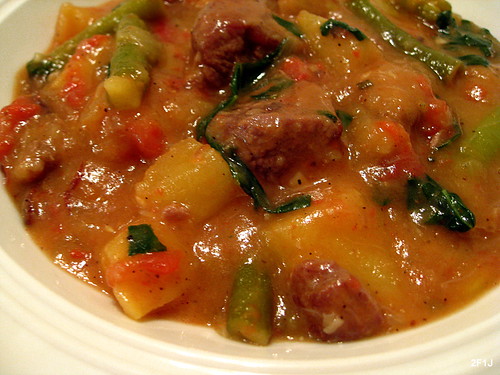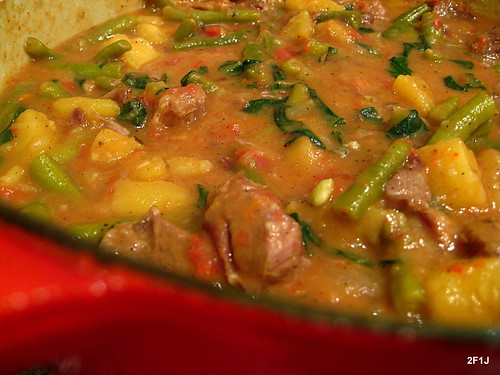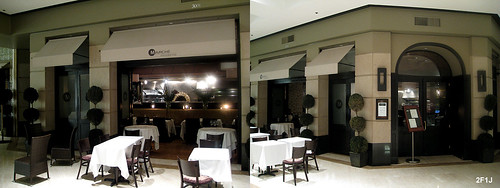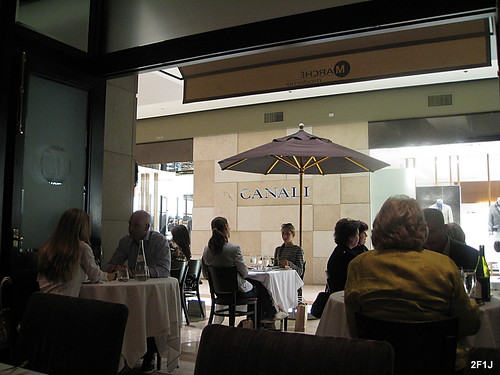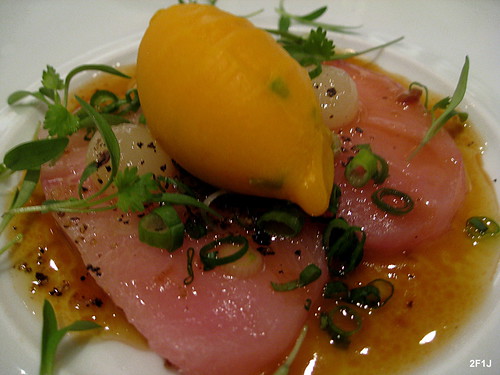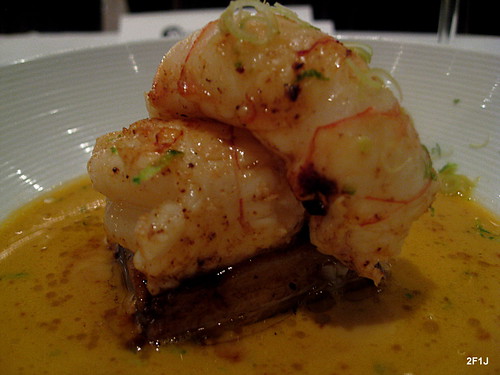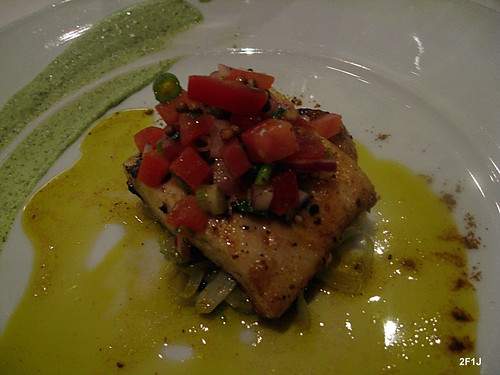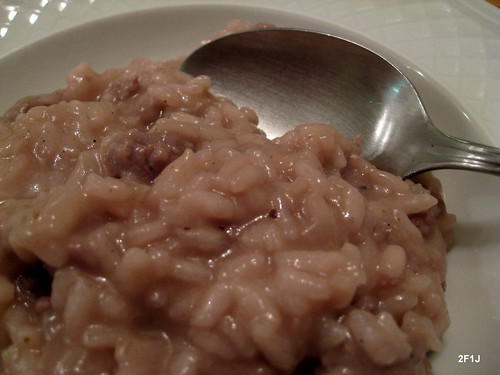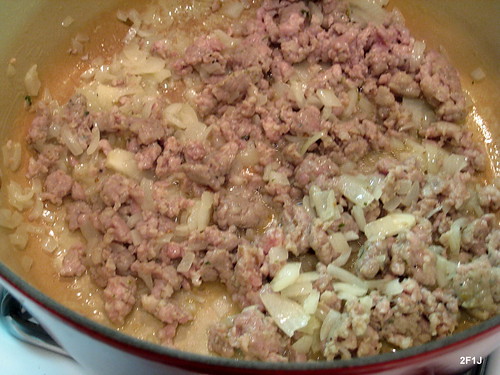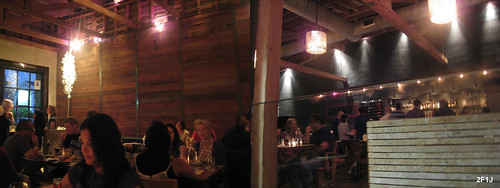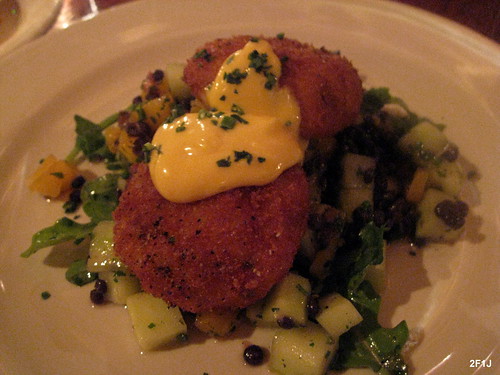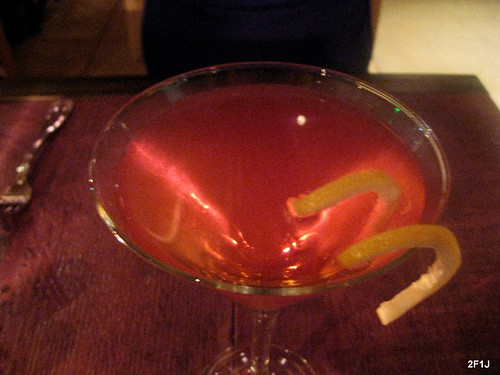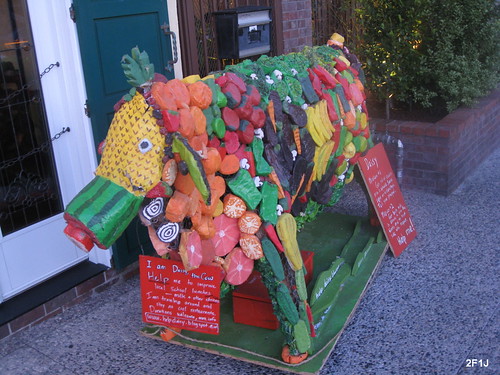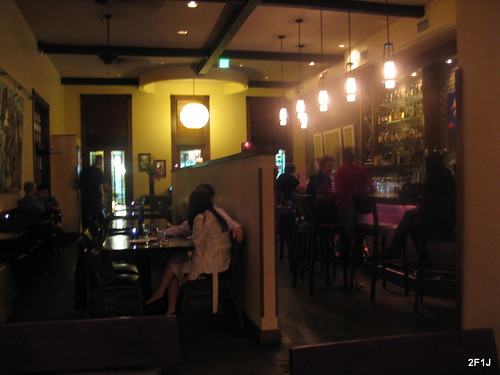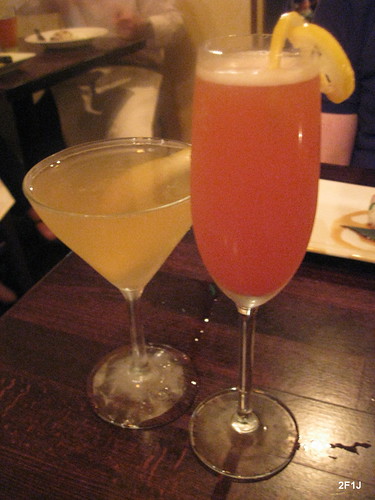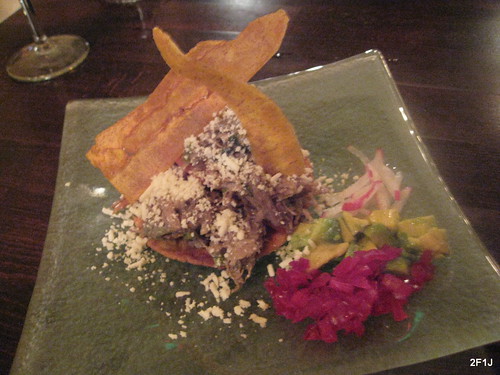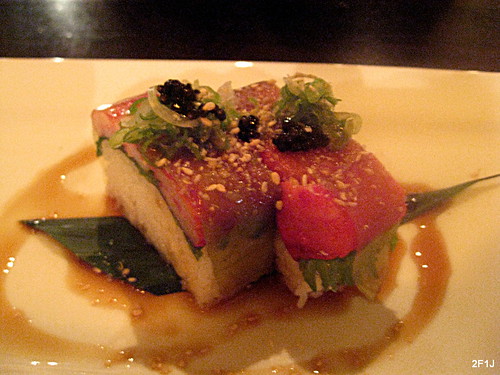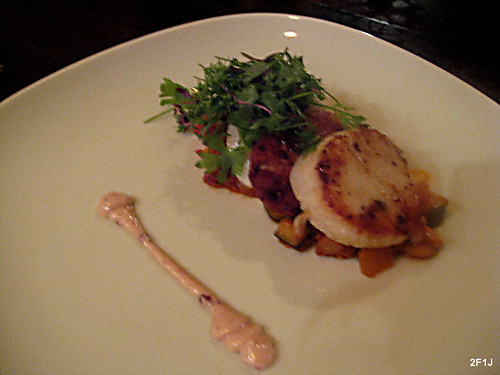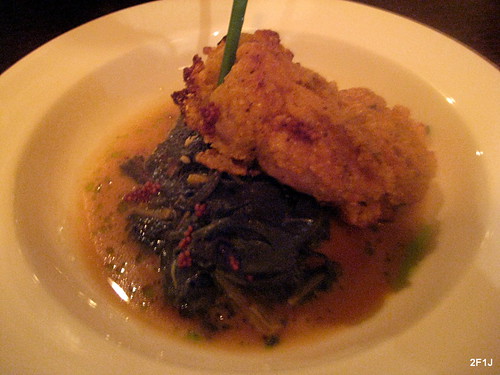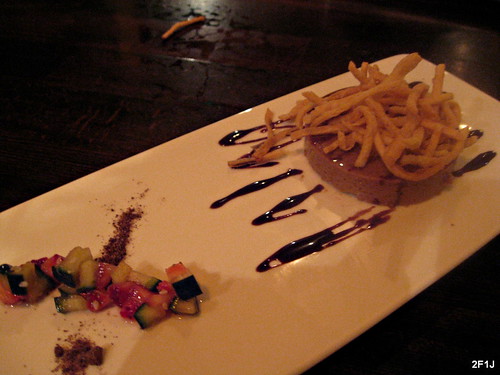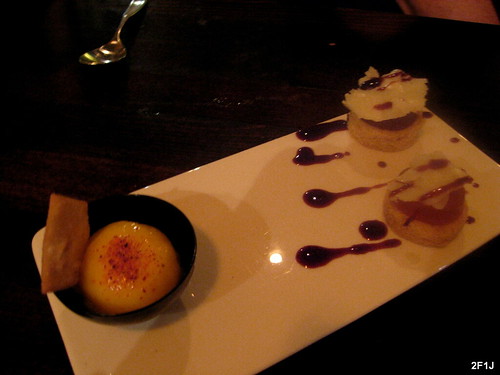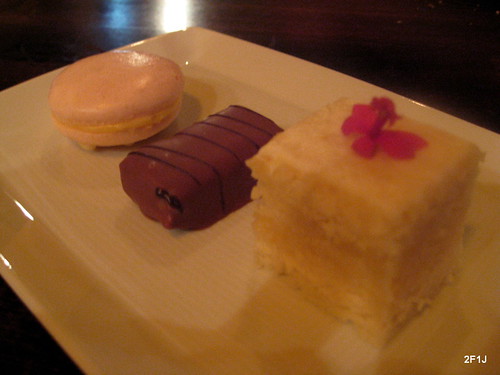Very few chefs in San Diego have such a high reputation as Carl Schroeder, chef and co-owner of Market in Del Mar. After graduating from the CIA in Hyde Park he worked at several well established restaurants in increasingly responsible roles which included sous chef positions at The White Elephant (Nantucket) and The Lark Creek Inn (Larkspur). At Lark Creek Inn he worked with Bradley Ogden who later convinced him to come to San Diego and become Executive Chef at Arterra. Chef Schroeder was able to establish Arterra very fast as one of the leading restaurants in San Diego due to his very creative cooking style which is even more remarkable since Arterra is part of the Marriott Hotel in Del Mar and hotel restaurants most often don’t promise good food in San Diego. As with most talented chefs he decided at some point of his career to open his own restaurant – Market (Del Mar) in 2006.
When we heard over the last few months that he was planning to open Bankers Hill Bar & Restaurant as his version of a bistro-style restaurant we were very much looking forward to see how his creative style of cooking would play out in such a setting. Similar to the Market Restaurant Carl Schroeder also partnered this project with Terryl Gavre, also known for her downtown Café 222.
Bankers Hill Bar & Restaurant is in the old location of the Modus Restaurant on the corner of 4th Avenue and Ivy. The outside looks quite nice with unique doors and gives already an idea of the rustic interior of the restaurant.
The restaurant is an interesting mix between rustic and industrial feel which is not uncomfortable, but we didn’t like that all the walls which don’t have a wood paneling are painted in black. It gives the restaurant an overall too dark ambience.
When we got the menus handed we were quite surprised how uninspired and boring most of these dishes sounded. We had serious problems to find any dishes which piqued our interests and which we hadn’t seen countless times on menus elsewhere. After some discussions we decided on a few dishes which seemed to be the most interesting.
Small Plate 1: Steamed mussels & Andouille sausage, roasted sweet peppers, garlic-parsley toast. Rather standard presentation of mussels but the broth was overly salty and the taste of the andouille sausage was too overwhelming so that it was hard to taste the mussels or anything else.
Small Plate 2: Crispy Dungeness crab & rockshrimp cakes, beluga lentil-arugula salad, chili aioli. Good crab cakes with common sides of cucumber, arugula and lentils. Not overly exciting but one of the better dishes of the night.
Entrée 1: Duck confit, warm red potatoes, grain mustard vinaigrette, mustarda. Large amounts of potatoes with a rather small piece of bland duck confit. Good duck confit should always have a crispy skin but unfortunately this one had only soft, flabby skin. The whole dish was unbalanced and a great disappointment.
Entrée 2: Cabernet braised beef shortribs, Yukon gold whipped potatoes, roasted vegetables. The whipped potatoes were very salty whereas the beef shortribs needed more salt. The best part of the dish were the roasted brussels sprouts.
Cocktail: The sweet withdrawal – Grey Goose vodka, Campari, sweet vermouth, Grand Marnier and orange flower water. We enjoy the recent explosion of good cocktail places especially in Los Angeles, e.g. Library Bar, Rivera, Roger Room where market-driven cocktails are one of the best recent food trends and San Diego has also a growing number of good cocktail places like Cowboy Star, Grant Grill Lounge etc. A good cocktail should be well balanced with all ingredients working next to each other. It should have a good punch from the alcohol without being overwhelmed by it. This cocktail was a prime example of how it shouldn’t be done. Any hints of orange and Campari were covered by an unbalanced, unpleasant alcohol taste.

Dessert: Almond lemon bread pudding, roasted strawberries, vanilla ice cream, caramel sauce. The dessert menu was also a bit unspectacular, including the ubiquitous butterscotch pudding but the bread pudding turned out to be the highlight of the night with a nice addition of very good roasted strawberries.
San Diego is sometimes a rather tough place for restaurants to balance staying in business and cooking creative food and there are numerous restaurants and chefs who overestimate the tolerance of restaurant customers in San Diego for very creative food. But in recent years quite a large number of restaurants in San Diego especially those who cook bistro-style/comfort food similar to the Bankers Hill Restaurant, like Alchemy, Urban Solace, Café Chloe, Starlite, Jayne’s Gastropub, Farmhouse Café were able to successfully balance business success with creative cooking. Each of these restaurants has its own unique menu and identity. Based on this promising trend it was a great disappointment, especially with the good reputation of Carl Schroeder, for us to see such an uninspiring and boring menu at Bankers Hill filled with the same old, same old standards one has seen before in countless other restaurants elsewhere. It felt like that the restaurant looked on the menus from all successful restaurants over the last ten years, picked all popular dishes and then instead of adding their own creativity dumped them down further to make sure that even customers who only eat at the Cheesecake Factory won’t find any unexpected dish or ingredient. The restaurant is a poster child for what didn’t work with many restaurants in San Diego a few years ago when they often only tried to be copycats of successful restaurants outside of San Diego without own creativity and cooking for the absolute mainstream and the lowest common denominator. Bankers Hill feels like a restaurant without its own identity which seems to rely only on the reputation of Carl Schroeder. If the same restaurant would have been opened by an unknown chef with less PR power many customers would have been deeply disappointed by its direction.
Even a disappointing menu could have been partially saved by at least well executed dishes. Unfortunately the kitchen showed several slips throughout the evening, starting from a duck confit which never should have left the kitchen to under- or overseasoned dishes.
Service at restaurants in San Diego often tend to be too laid-back and informal but still reasonably professional. Many lapses throughout the service at Bankers Hill made an already not great night quite uncomfortable:
- Server asked what we wanted to drink when he hasn’t even brought the beverage menus. We asked then twice if they also serve cocktails and have a cocktail list. Since he didn’t bring one we assumed the restaurant doesn’t serve any. As we found out later this is not the case.
- A minute after we ordered our food suddenly a server comes to our table, grabs our bread and bread plates, says that we are done with our evening and moves away. It took quite some time and efforts until we got some bread back but still no bread plates.
- It is customary in restaurants that you get an extra plate if you order a mussels dish to put the empty shells somewhere. Apparently not at Bankers Hill where we had to flag down somebody.
- Either they change their layout of the tables or train their servers better not to bump into chairs every few minutes. We stopped counting after the tenth time. Obviously we weren’t the only table with this problem since other tables made very vocal complains to be moved to other tables only to be replaced by other customers who after ten minutes complained for the same reason.
- Some restaurants confuse good service with five different servers asking if everything is fine within four minutes.
- It is hard to remember when we have seen such dirty restrooms anywhere.
- After we finished our entrees we asked our server, like we normally do, that we would like to have a small break between courses and if he could bring us the dessert menus in about ten minutes. He agreed only to come back one minute later with the menus and the question if we want to order dessert now. We explained again that we would like to wait about ten minutes, he agreed again, turns to the table next to us only to come back to us after 30 seconds and asking again if we want to order now. This time we made it very clear what we wanted.
- As mentioned above we asked at the beginning of the night for cocktails and the server seemed to imply that the restaurant doesn’t serve any. Throughout the night we saw later other tables getting cocktails and so we wanted to have some as a “liquid dessert”. When asked for dessert we asked our server again if they serve cocktails and he looks at us surprised – “Cocktails ?” as if it would be strange from us to think that this restaurant serves cocktails. This time we pointed towards two tables away from us which had two cocktails. Server looks at it – “Oh yes, we have cocktails” as if it would be strange not to expect cocktails in this restaurant. He looks at us for about ten seconds without saying anything and we ask again for a cocktail menu. The server looks surprised at us – “Oh, you want cocktails ?” At this point even the table next to us who followed our discussions with the server started laughing and we started to look for the hidden camera.
Overall our visit to Bankers Hill Bar & Restaurant was a very underwhelming experience. Issues like bad service and badly executed dishes should never happen in this frequency but are all fixable with better training. What disappointed us much more was the whole concept and uninspired menu of the restaurant which was just a poor copy of many other restaurants without any own creativity. It will be interesting to see if Terryl Gavre and Carl Schroeder will continue this path or at some point will try to create their own unique menu and identity.
2202 4th Avenue
San Diego, CA 92101
(619) 231-0222
